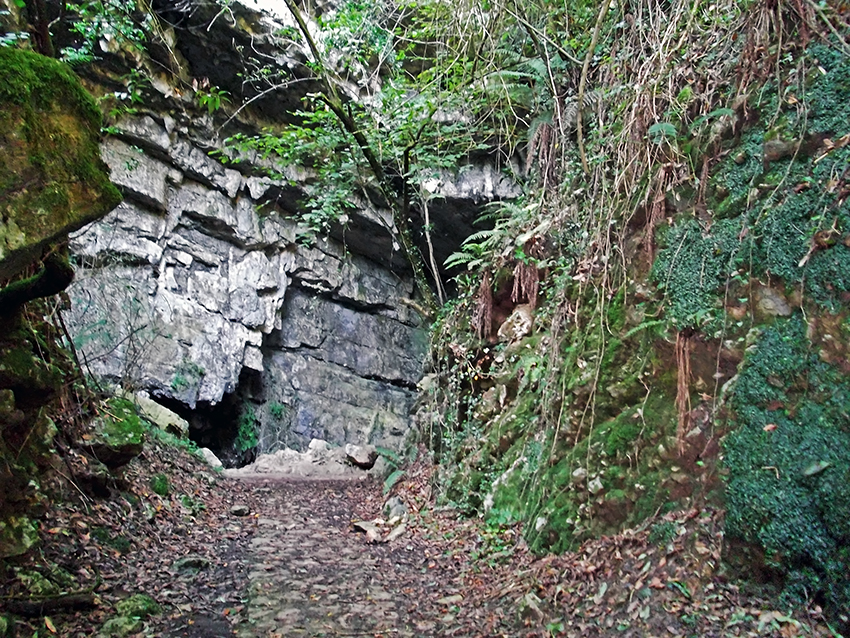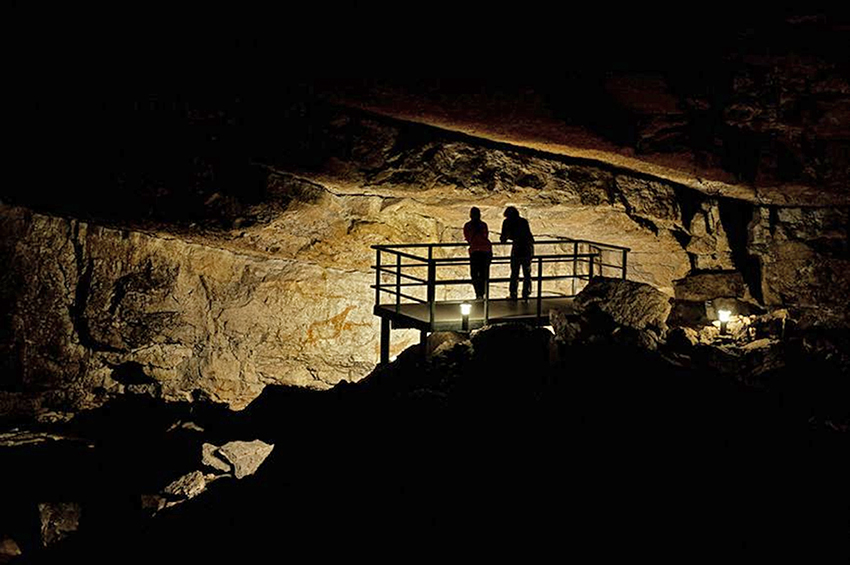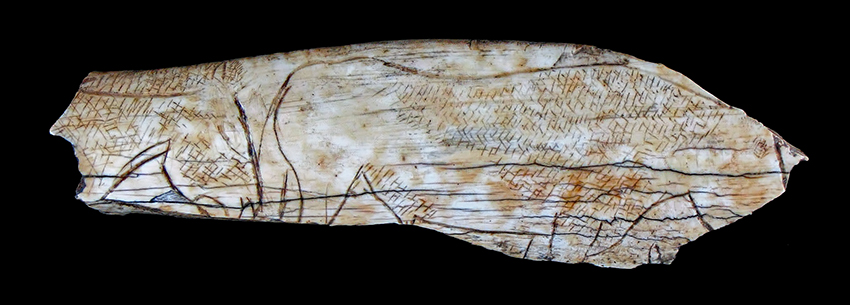Back to Don's Maps
Back to Venus figures from the Stone Age
 Back to Archaeological Sites
Back to Archaeological Sites
Venus of El Pendo Cave (Santander)
Note that this may be of modern manufacture
The Venus of El Pendo Cave, Camargo, province of Santander, may be of modern manufacture. It is in the form of a spear straightener or baton de commandement, made of deer antler, variously dated to the Solutrean or the upper Magdalenian, excavated by Abbé Jesus Carballo at El Pendo Cavern. Of interest is the form of the handle, which evokes the feminine form. This 'Venus' was discovered in the Solutrean layer of the El Pendo Cave. It is made of deer antler, and its form evokes that of a woman, with arms raised and with large hips.
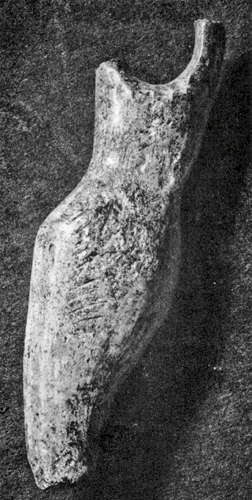
A spear straightener made of deer antler, from the upper Magdalenian, excavated by Abbé Jesus Carballo at El Pendo Cavern.
Of interest is the form of the handle, which evokes the feminine form.
Note that the authenticity of this piece is not confirmed.
Photo: Giedion (1962)
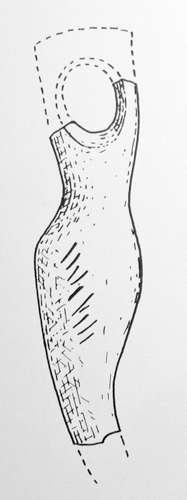
This 'Venus' was discovered in the Solutrean layer of the El Pendo Cave, Camargo, province of Santander. It is made of deer antler, and its form evokes that of a woman, with arms raised and with large hips.
In fact, it is very likely a fragment of a baton perforé, or spear straightener.
(Delporte goes on to question the authenticity of feminine forms in the rock art of the Spanish Levant, and their attribution to the Upper Palaeolithic. Reading between the lines, he obviously thinks that this is of modern manufacture - Don )
Photo and text: Delporte (1979)
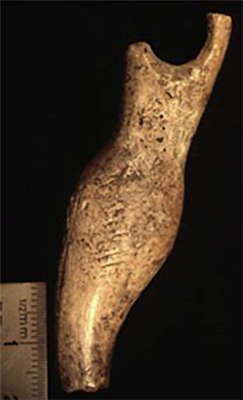
Another version of the venus.
Height 7 cm.
Photo: © Maudet Morgane, Musée de Préhistoire de Santander.
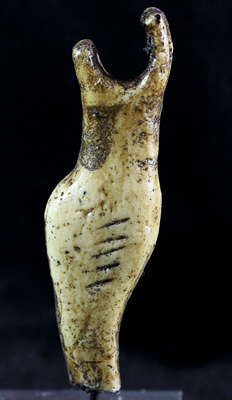


This is a facsimile of the venus.
Seen in this format, the similarity to modern norms of feminine beauty is obvious.
Photo: http://www.litos.net/tienda/arte-e-instrumentos/132-venus-del-pendo.html
Entrance to Cueva de El Pendo.
Photo: © Codigowiki
Permission: Creative Commons Attribution-Share Alike 3.0 Spain license, via Wikimedia
Wall of paintings including deer and a horse at Cueva de El Pendo.
This is part of the ‘Frieze of Paintings’, a panel measuring 25 metres in length visible from any point in the main hall, containing some twenty figures painted in red. It shows 12 deer, a goat, a horse and various other symbols, all drawn using the contour technique. It dates from around 22 000 BP.
Photo: © Sautuola1880
Permission: Creative Commons Attribution-Share Alike 4.0 International license, via Wikimedia
Text: Adapted from www.spainisculture.com
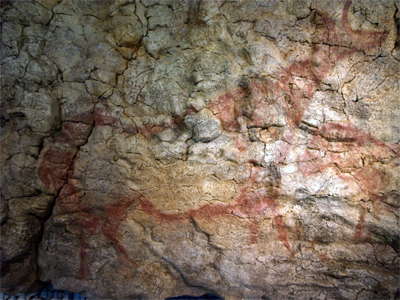
Female deer, and part of a small horse, as above.
Photo: Ernesto Lazo via Picasa
Viewing platform at the frieze of paintings, Cueva de El Pendo.
Photo: © Gobierno de Cantabria
Permission: Creative Commons Attribution 3.0 Unported license, via Wikimedia
Fish-shaped spatula, a bone piece of great beauty, originality and exquisite workmanship from El Pendo, which comes from the excavations carried out by Father J. Carballo, founder of the MUPAC, between 1932 and 1934.
Photo and text: © Gabinete de Prensa del Gobierno de Cantabria
Permission: Creative Commons Attribution 3.0 Spain, via Wikimedia
Piece found in the cave of El Pendo during the excavations carried out by Father J. Carballo, founder of MUPAC, between 1932 and 1934. It is a fragment of engraved diaphysis (central part of a long bone) in which two incomplete figures can be observed. On the one hand, the head and neck of a horse engraved with great detail representing the ear, the mane, the eye, the nostril and the mouth, in addition to a fine crisscross line that fills the silhouette.
The other figure, more complete, represents an aurochs, drawn with great precision, perfect proportions and perspective. In this case, the fine crisscrossing highlights the belly and the dorsal area. The aurochs is an animal very rarely represented in Palaeolithic portable art, which makes this a truly exceptional piece.
Photo and text: © Gabinete de Prensa del Gobierno de Cantabria
Permission: Creative Commons Attribution 3.0 Spain, via Wikimedia
References
- Delporte H., 1979: L'image de la femme dans l'art préhistorique, Paris, Picard.
- Giedion S., 1962: The eternal present: the beginnings of art : a contribution on constancy and change, Pantheon
